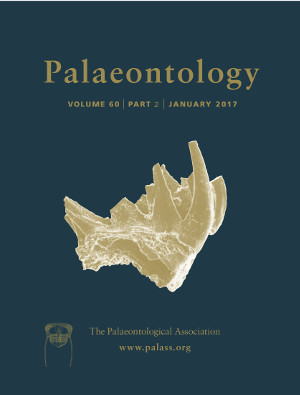Reg. Charity No. 1168330

Understanding how regional ecosystems respond to sea‐level and environmental perturbations is a main challenge in palaeoecology. Here we use quantitative abundance estimates, integrated within a sequence stratigraphic and environmental framework, to reconstruct benthic community changes through the 13 myr history of the Jurassic Sundance Seaway in the western United States. Sundance Seaway communities are notable for their low richness and high dominance relative to most areas globally in the Jurassic, and this probably reflects steep temperature and salinity gradients along the 2000 km length of the Seaway that hindered colonization of species from the open ocean. Ordination of samples shows a main turnover event at the Middle–Upper Jurassic transition, which coincided with a shift from carbonate to siliciclastic depositional systems in the Seaway, probably initiated by northward drift from subtropical latitudes to more humid temperate latitudes, and possibly global cooling. Turnover was not uniform across the onshore–offshore gradient, but was higher in offshore environments. The higher resilience of onshore communities to third‐order sea‐level fluctuations and to the change from a carbonate to a siliciclastic system was driven by a few abundant eurytopic species that persisted from the opening to the closing of the Seaway. Lower stability in offshore facies was instead controlled by the presence of more volatile stenotopic species. Such increased onshore stability in community composition contrasts with the well‐documented onshore increase in taxonomic turnover rates, and this study underscores how ecological analyses of relative abundance may contrast with taxonomically based analyses. We also demonstrate the importance of a stratigraphic palaeobiological approach to reconstructing the links between environmental and faunal gradients, and how their evolution through time produces local stratigraphic changes in community composition.